National American Bank Building (New Orleans)
Introduction
Text-to-speech Audio
This 24-story, 330 feet-tall building was completed in 1929 and housed the New Orleans branch of American Bank and Trust. One of New Orleans tallest buildings, the first couple floors were reserved for banking and the upper stories were leased office spaces. In 1949, the bank changed their name to National American Bank, but went back to their original name in 1981. The bank sold this building in 1985 and it was mainly vacant for the next few decades. The building, with its distinctive octagonal Art Deco style water tower top capped by a bronze and steel lantern, was added to the National Register of Historic Places in 1986 for its architecture. After being renovated in the first decade of the twenty-first century, the building is now an apartment complex called "200 Carondelet" after the building's address.
Images
Top of the bank building soon after it opened
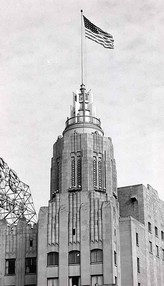
1934 view from Bourbon St. across Canal St. to Carondelet St.; "American Bank" sign on top of bank (Keystone View Company)
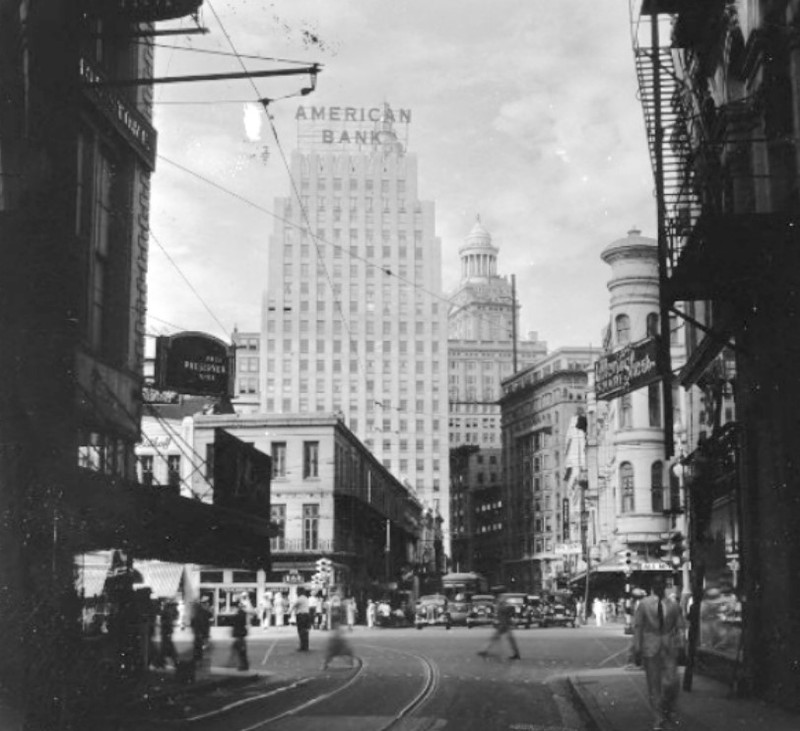
View of National American Bank building in 1986 (Jonathan Fricker for NRHP)
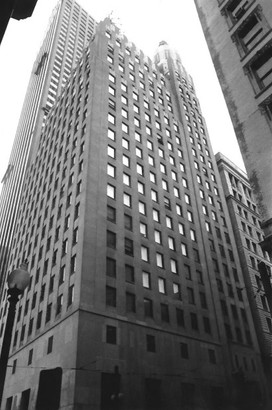
Carondelet St. entrance into bank building in 1986 (Fricker)
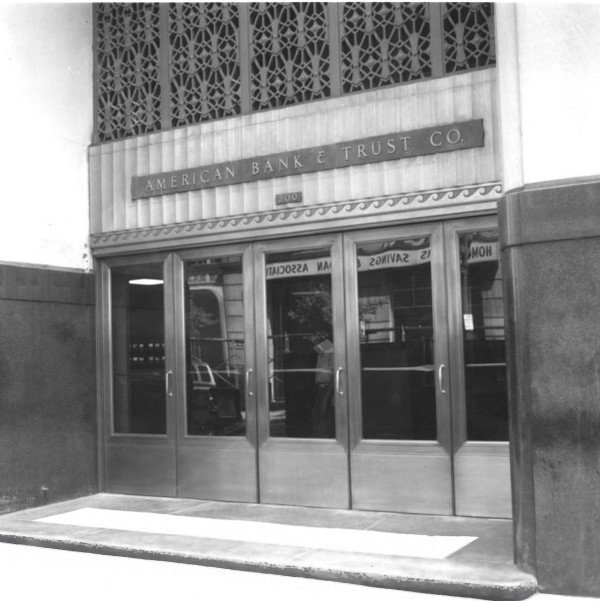
Detail of bronze doors along Common St. with famous Americans from U.S. currency in relief (cropped from Fricker 1986)
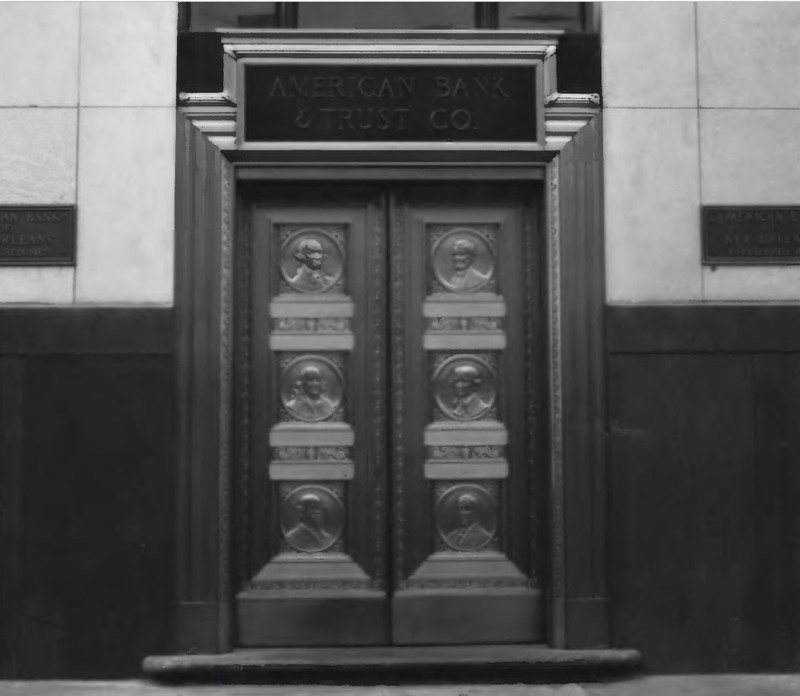
View looking down into the banking hall in 1986; people by original bronze check stations (Fricker)
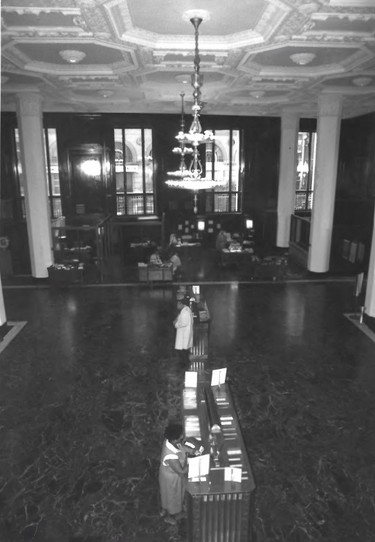
Modern view of Carondelet St. entrance to former bank building (Infrogmation of New Orleans 2010)
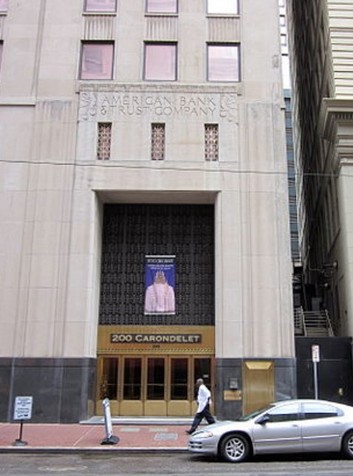
Backstory and Context
Text-to-speech Audio
The National American Bank of New Orleans was founded in 1917 as American Bank and Trust Company. Their new 24-story skyscraper at 200 Carondelet was designed by architects Moise H. Goldstein and Nathaniel Courtland Curtis. Goldstein was educated in New Orleans public schools, Tulane University, and the Massachusetts Institute of Technology before opening an architectural firm in town; he worked in the city until about 1960. The main contractor was George J. Glover & Company.
The surfaces of the Art Deco (Modernistic) style, steel-frame building were mainly plain, with a base of polished granite topped by limestone. The building was topped by a five-story octagonal tower faced in terra cotta and capped by a bronze and steel lantern; the lantern was later replaced by an ornamental finial. Entry doors and grilles on the first- and second-floor windows were bronze. The bronze doors of the Common St. entrance featured six panels with relief images of famous Americans who appear on U.S. currency. The bank's name was inscribed in a panel above the Carondelet entrance between stylized eagles. A series of setbacks above parapets started at the fifteenth floor, pushing the building's facade back from the street corner; these commercial Gothic-style setbacks weren't required (as they were in New York City), but were based on styles used in New York. The opulent marble main lobby was topped by a gold and silver leaf pressed metal ceiling. The building was one of the first public buildings in New Orleans and Louisiana to feature air conditioning. One of the tenants in the office floors was Goldstein's firm.
American Bank and Trust changed their name to the National American Bank of New Orleans in the 1940s. They built an additional branch building in town in 1952 to 1954 at Lee Circle (also a Goldstein firm design), with two "motorbank" drive-through windows and more parking space (demolished in 2007). New owners changed the bank's name back to American Bank and Trust in 1981 but then sold the Carondelet St. building in 1985. The building was listed on the National Register of Historic Places in 1986. The building had been mainly vacant for many years when it was renovated around 2008 to provide affordable housing that was needed in post-Hurricane Katrina New Orleans. The marble lobbies were among the areas restored; the bronze lantern atop the tower was replaced with a golden replica.
The building, now known as "200 Carondelet," is in the heart of the Central Business District. It advertises that it "offers residents a stylized exterior from the past with a state of the art interior complete with all the modern day amenities. According to the Louisiana National Register of Historic Places, 200 Carondelet “is only one of four Modernistic skyscrapers in the state and the only one in New Orleans.” The water tower feature is one of the fanciest of the state's Modernistic commercial buildings.
Sources
200 Carondelet. A Historic Icon Reimagined, 200 Carondelet: Neighborhood. January 1st, 2024. Accessed April 22nd, 2024. http://www.200carondelet.com/#neighborhood.
Duplanter, Michael. The National American Bank Building, 200 Carondelet Street, New Orleans Historic District Landmarks Commission. May 25th, 1978. Accessed April 22nd, 2024. https://nola.gov/nola/media/HDLC/Designation%20Reports/200carondelet-report_001.pdf.
Huber, Leonard V. Wilson, Samuel , Jr. Landmarks of New Orleans. Edition Reprint. New Orleans, LA. Louisiana Landmarks Society and Orleans Parish Landmarks Commission, 1991.
National Register staff. First American Bancshares, Inc . NRHP nomination of National American Bank of New Orleans building, 200 Carondelet St., New Orleans, LA. National Register of Historic Places. Washington, DC. National Park Service, 1986.
Pontchartrain, Blake. With dollar signs at its base, the American Bank and Trust building opened in 1929 on Carondelet, Gambit. March 26th, 2023. Accessed April 22nd, 2024. https://www.nola.com/gambit/news/blake_pontchartrain/blake-pontchartrain-with-dollar-signs-at-its-base-the-american-bank-and-trust-building-opened/article_343d7e62-c995-11ed-af19-870c2d7e6118.html.
Scott, Mike. Two 1900s buildings have the same name and the same architect, but their fates are vastly different, Nola.com. June 29th, 2021. Accessed April 22nd, 2024. https://www.nola.com/entertainment_life/two-1900s-buildings-have-the-same-name-and-the-same-architect-but-their-fates-are/article_9522ae2e-d82d-11eb-b551-f76e55e76ec2.html.
Stock, Francine. National American Bank Building (1929), Regional Modernism: The New Orleans Archives. March 10th, 2011. Accessed April 22nd, 2024. https://xxno.blogspot.com/2011/03/national-american-bank-building-1929.html.
Stock, Francine. National American Bank (Lee Circle branch) 1952-1954, razed 2007, Regional Modernism: The New Orleans Archives. March 10th, 2011. Accessed April 22nd, 2024. https://xxno.blogspot.com/2011/02/national-american-bank-lee-circle.html.
Wilson, Samuel, Jr. Wilson, Samuel. A Guide to Architecture of New Orleans, 1699-1959. Edition reprint of 1959. New Orleans, LA. Louisiana Landmarks Commission, Samuel Wilson, Jr. Publication Fund, 1998.
Southeastern Architectural Archive, Tulane University Archives
https://commons.wikimedia.org/wiki/File:Canal_%26_Carondelet_Streets,_New_Orleans,_1934_stereo_view.png
National Park Service (NPS): https://npgallery.nps.gov/AssetDetail/NRIS/86001048
NPS: https://npgallery.nps.gov/AssetDetail/NRIS/86001048
NPS: https://npgallery.nps.gov/AssetDetail/NRIS/86001048
NPS: https://npgallery.nps.gov/AssetDetail/NRIS/86001048
https://commons.wikimedia.org/wiki/File:Carondelet_CBD_4.JPG
